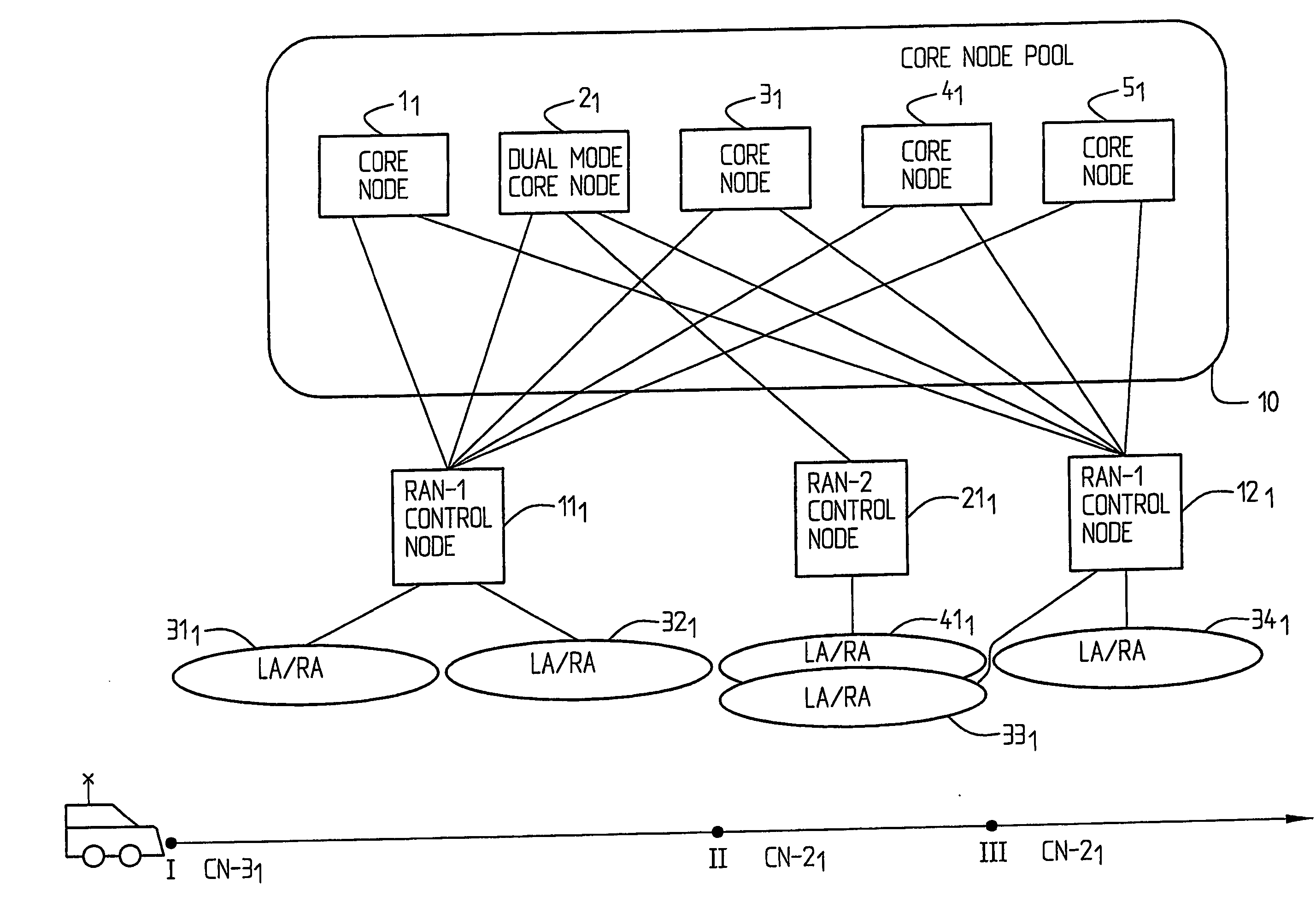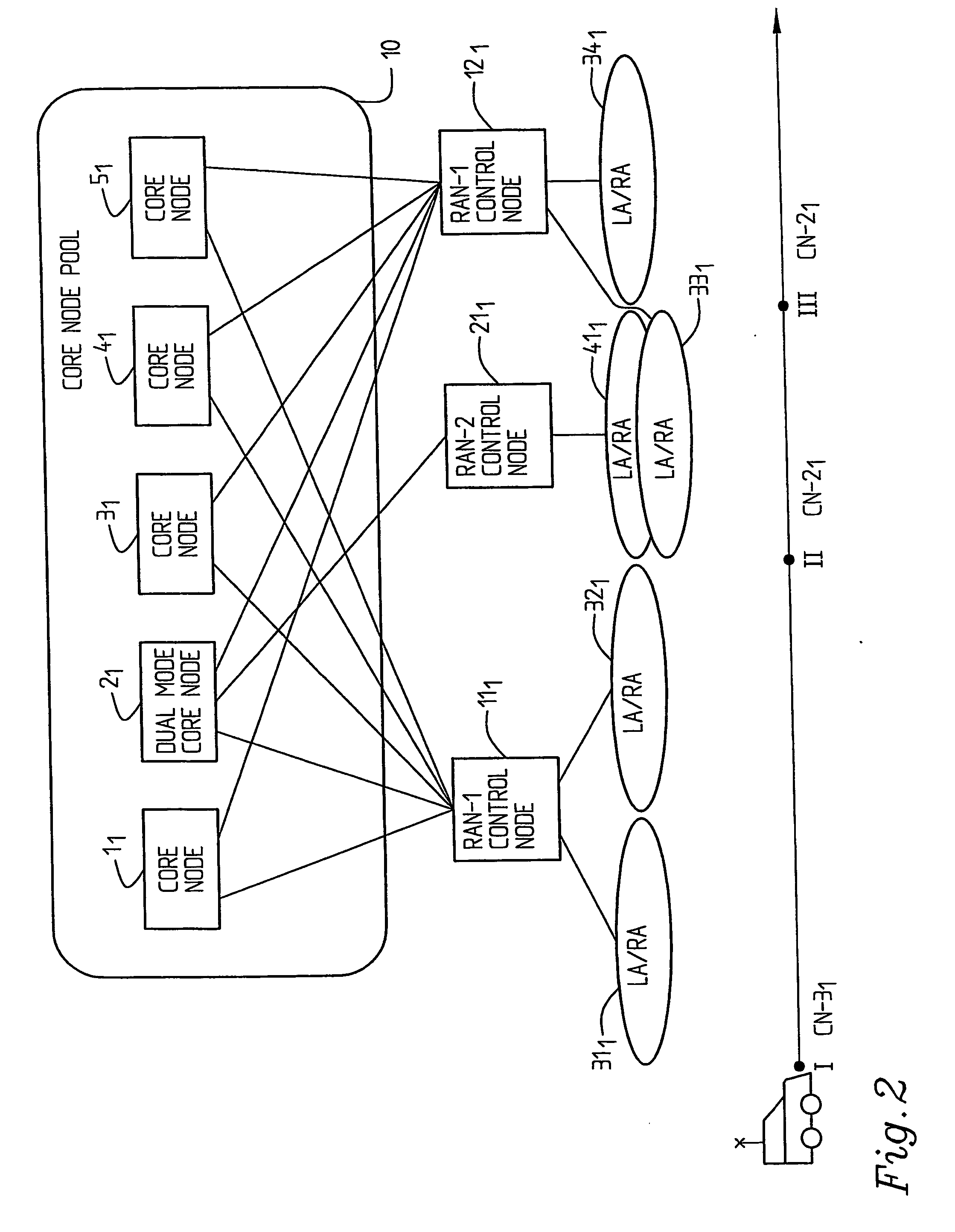Mobile Station Moving in Communications Systems Supporting Communication of Data
a technology of communication system and mobile station, applied in the direction of network data management, electrical equipment, selection arrangements, etc., can solve the problems of wasting resources, requiring a lot of complicated configurational work, and substantial load on home location nodes, so as to reduce costs, increase the benefits of pooling concept, and save bandwidth
- Summary
- Abstract
- Description
- Claims
- Application Information
AI Technical Summary
Benefits of technology
Problems solved by technology
Method used
Image
Examples
Embodiment Construction
[0025]FIG. 2 shows a pool of core nodes 11, 21, 31, 41, 51. Core node 21 is a dual access mode core node supporting access by two different radio access networks using different radio access technologies, here RAN-1 and RAN-2. Each radio access network, here RAN-1 and RAN-2, comprises a number of base stations (not shown) controlled by radio network control means, here RAN-1 control node 111, RAN-1 control node 121 and RAN-2 control node 211. The core nodes in the pool share the responsibility for the control of radio access network RAN-1, which here means that any core node of the pool is able to control any one of the radio network control nodes 111, 121 of RAN-1. In this embodiment all core nodes are provided in a common pool. However, a pool may comprise more than two sites, there may also be more than one pool etc. It is in this context referred to the Swedish Patent Application with the application number 0003719-2 filed on Oct. 13, 2000 by the same applicant. This document is...
PUM
 Login to View More
Login to View More Abstract
Description
Claims
Application Information
 Login to View More
Login to View More - R&D
- Intellectual Property
- Life Sciences
- Materials
- Tech Scout
- Unparalleled Data Quality
- Higher Quality Content
- 60% Fewer Hallucinations
Browse by: Latest US Patents, China's latest patents, Technical Efficacy Thesaurus, Application Domain, Technology Topic, Popular Technical Reports.
© 2025 PatSnap. All rights reserved.Legal|Privacy policy|Modern Slavery Act Transparency Statement|Sitemap|About US| Contact US: help@patsnap.com



